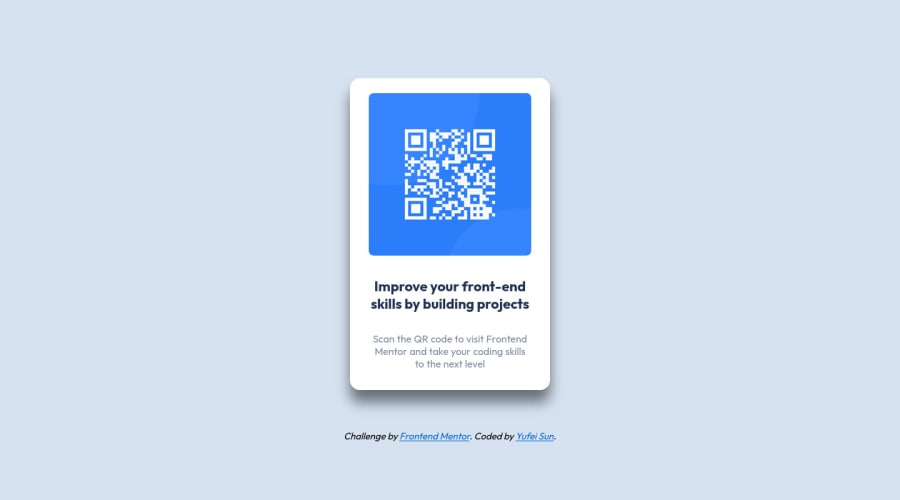
Design comparison
SolutionDesign
Solution retrospective
Hi there! 🤗I'm Yufei, and this is my solution for a challenge created by Frontendmentor. Since I'm new to HTML and CSS, this project is a good opportunity to practice them. The main challenge of this project is to build out this QR code component and get it look as close to the design as possible. The users should be able to view the optimal layout depending on their device's screen size. Built with
- Semantic HTML5 Markup
- CSS custom properties
- Flexbox
- Desktop-first workflow
Community feedback
Please log in to post a comment
Log in with GitHubJoin our Discord community
Join thousands of Frontend Mentor community members taking the challenges, sharing resources, helping each other, and chatting about all things front-end!
Join our Discord
